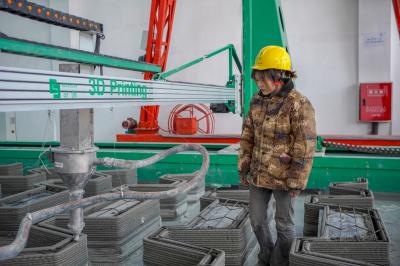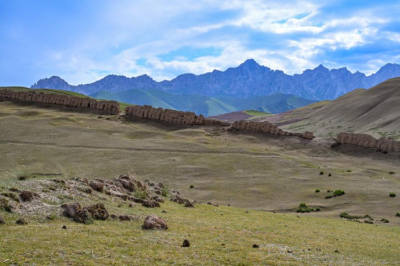– The management of religious affairs is law-based. The state and the Tibet Autonomous Region manage religious affairs in accordance with laws and regulations. Freedom of religious belief, normal religious activities, and the legitimate rights and interests of religious groups are protected in accordance with the law. Since the introduction of reform and opening up in 1978, the government of the Tibet Autonomous Region has, based on local conditions, issued a series of policy measures and regulatory documents, to strengthen the management of religious affairs in accordance with laws and regulations. These include: Regulations of the Tibet Autonomous Region on the Democratic Management of Buddhist Monasteries (trial), Measures of the Tibet Autonomous Region on Implementing the Regulations on Religious Affairs (trial), Measures of the Tibet Autonomous Region on the Management of Major Religious Activities, and Detailed Rules of the Tibet Autonomous Region for the Implementation of the Measures on the Management of Living Buddha Reincarnation of Tibetan Buddhism. In 2017 the state released the revised Regulations on Religious Affairs. The regional government has also issued regulatory documents on strengthening education, cultivation and management of Living Buddhas and representative figures of Tibetan Buddhism, on the management of religious activities, on the examination and approval of the construction and repair of religious activity sites, and on the administration of the branches of the Tibetan Buddhist Institute. All of this has shown that the top-level design for religious affairs and relevant rules concerning religious activities in Tibet have been much improved. IX. Strengthening Ethnic Equality and Unity
The Chinese people of all ethnic groups are united in diversity. In the long course of history, the ethnic peoples of Tibet have worked together to develop the plateau and create the history of Tibet, which is an important part of the history of the Chinese nation. Since the founding of the People’s Republic of China, the CPC and Chinese government have taken a pragmatic approach towards ethnic problems, formulated and implemented ethnic polices in the principles of ethnic equality and unity, regional ethnic autonomy, and the common prosperity of all ethnic groups.
Over the past 60 years, Tibet has fully implemented the ethnic policy of the CPC to enhance the awareness of ethnic solidarity and the sense of community of the Chinese nation, strengthen ethnic communication and integration, and build a new type of socialist ethnic relationship featuring equality, solidarity, mutual assistance and harmony. In the effort to maintain national unity and oppose separation, the ethnic groups of Tibet have withstood all tests and resisted all risks by rallying around the CPC Central Committee. Over the past 60 years, the central government and all ethnic groups have been committed to the coordinated development of Tibet and the nation. From 1959 to 1965, financial subsidies from the central government continued to increase in spite of economic difficulties across the country, adding up to 590 million yuan. From 1963 to 1964, the state earmarked 1.4 million yuan to help farmers and herdsmen, purchasing cattle and sheep for over 3,000 households. The central government has also allocated special funds for some major projects. It is estimated that from 1959 to 1964, the central government issued a total of 8.47 million yuan in interest-free and low-interest loans for agriculture and animal husbandry. The loans were used for purchasing over 20 million kilos of seeds and grain, 18,000 head of cattle, 13,000 sheep, 3,500 other domestic animals, 100,000 farm tools and 95 tons of steel for making tools. At major historical points in Tibet’s socialist construction, reform and development, the central government has mobilized and organized as many resources as possible from across the country to help Tibet to realize common prosperity. In the 1960s, goods for work and daily life such as grain from Xinjiang, tea from Fujian, fine breeds of livestock from Sichuan and blankets from Shanghai were provided to meet the needs of the people in Tibet. The bond is close between all ethnic groups, particularly when disasters strike. In 1966, when Xingtai in Hebei Province was hit by an earthquake, a group of around 60 herdsmen from Tibet walked for a total of 26 days, covering more than 5,500 km to bring 240 horses to Xingtai to help with the relief work. Thirty years later, a contingent of 28 people from Xingtai drove 60 locally made tractors to Lhasa to return the old favor. In 1985, 1990 and 1997 when blizzards struck Nagqu, people all over China reached out to help, sending food, quilts and coats to Tibet. In 2008 when Wenchuan in Sichuan Province was hit by an unprecedented earthquake, all the ethnic peoples of Tibet offered donations to the affected area. The list of such stories of mutual aid goes on. After reform and opening up, the central government has been stepping up its assistance to Tibet. The National Symposium on Work in Tibet was held in 1980, 1984, 1994, 2001, 2010 and 2015 to improve the preferential policies applying to Tibet. After the first symposium, a series of polices to improve the economy, alleviate poverty, and work for a better life were implemented. After the second symposium, policies were introduced giving priority to household-based business operation and market regulation. Long-term government policies towards Tibet allow private ownership of livestock on a household basis, independent feeding management and business operation in pastoral areas; in agricultural areas, household-based ownership of farmland is allowed, and farmers independently make decisions regarding the use and operation of their land. After the third symposium, the central government issued a range of preferential policies covering taxation, investment and financing, financial service, price subsidies, foreign trade, social security, agriculture and rural areas, and enterprise reform. In 2005, another long-term policy of public ownership of grassland, the household contract system, and independent management was adopted by Tibet. After the turn of the new century, the central government strengthened support for preferential policies in Tibet in line with changes in overall national and local development. There are 40 preferential policies in the Notice of Preferential Policies on Accelerating the Development and Maintaining Stability in Tibet released by the General Office of the State Council in 2006. These became more comprehensive in the Opinions on Major Polices and Projects Concerning Giving Support to Social and Economic Development in Tibet in 2016. It is estimated that financial aid from the central budget totaled 1.24 trillion yuan from 1980 to 2018, making up 91 percent of Tibet’s financial expenditure. |
- Home
- News |Tibet |Exclusive |China |World |Related News |Latest
- Documents |White Papers |Others
- Photo |Politics |Economy & Society |Culture & Religion |Human & Nature |Beautiful Tibet |Other Tibetan-Inhabited Area |Exchanges |Related
- Video |News |Documentary |Micro-Video |Entertainment
- Art
- Tourism
- In Focus
- About Tibet






